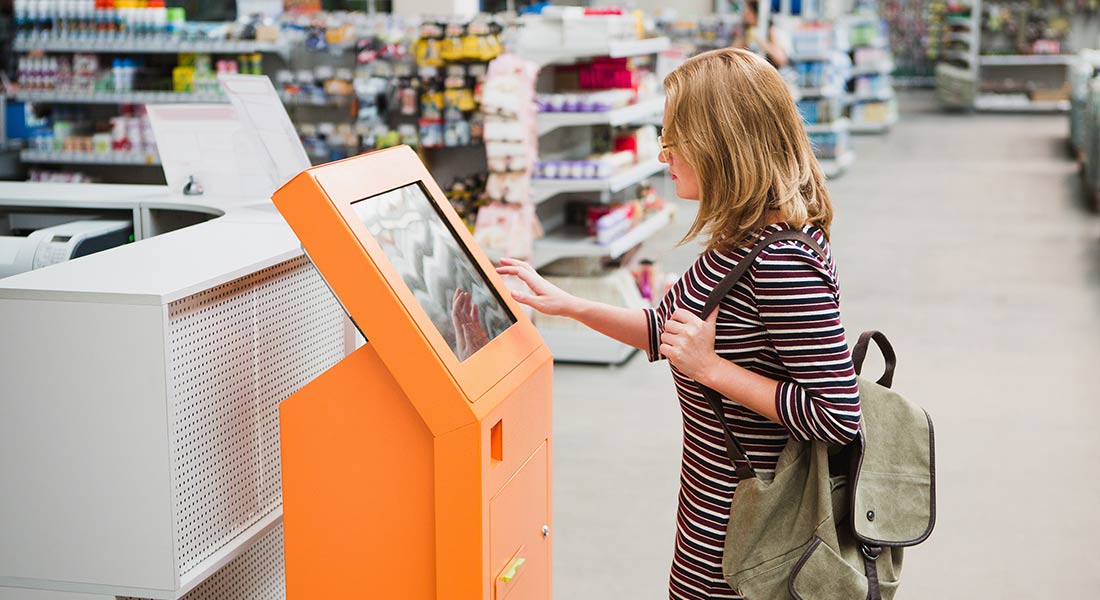Estimated reading time: 4 minutes
In decades past, one could go to the local market, deli, dime store, or small retail shop, and there was a pretty good chance that the cashier knew their name. This was also the case at cafes, gasoline stations, and banks. As a result, cashiers, like the businesses they worked for, were staples of local communities across the United States. They would become familiar with their customers’ shopping and dining preferences and engage in friendly chit-chat at the cash register. Complementing the shopping and dining experience was the unique sound of the ringing bell and sliding cash drawer of the cash register.
Oh, how times have changed. You can still find this level of personalized customer service, but cashiers now use technology to ring up sales. Bar code scanners, magnetic card readers, credit card and debit card chip readers, and point-of-sale (POS) systems accelerate the transaction process. The self-service kiosk is another technological advancement that helps get shoppers in and out of stores quickly. So, what is a kiosk? This Balboa Capital blog post answers that question and explains how kiosks can benefit small businesses.
Kiosk definition.
A kiosk is a type of interactive self-service machine that can be found in retail businesses, franchise businesses, restaurants, coffee shops, airports, shopping malls, theme parks, movie theaters, stadiums, museums, schools, and healthcare facilities. They are usually used by the customer to purchase products but can also be used to find information, directions, etc. Users can access a kiosk machine by tapping its touch screen and navigating through the on-screen options. Each time the user taps an on-screen command or enters information, the kiosk’s built-in software goes to work and provides the user with an automated interaction.
A kiosk and its software can be customized based on the type of business and the functionality needed. For example, a restaurant might have a kiosk that lets diners order meals from a menu before they are seated. Or, a hotel might have one that allows guests to check in, request room service, and check out.
Tailored to business’s needs.
As we just mentioned, kiosks can be configured depending on the specific needs and purpose of the business and whether they will be located indoors or outdoors. Both indoor and outdoor kiosks serve the same objectives and are designed to handle high volume. Depending on where a kiosk is placed, such as outdoors or in a brightly lit indoor area, its screen might need an anti-reflective coating to increase readability. Outdoor versions are built with durable materials and hardware that can help protect them against a variety of weather elements, such as sunlight, wind, rain, and snow. There are many different types of kiosks. They can be categorized into the following categories.
Self-service kiosks
Customers use these to perform transactions on their own, without assistance from an employee of the store. There are many types of self-service kiosks, such as ATMs, ticket vending machines, and grocery checkout counters.
Information kiosks
These kiosks provide information about a specific topic like tourist attractions, local restaurants, local events or activities, or emergency services in a given area. In addition, contact information such as addresses, phone numbers, and virtual maps are added benefits for users.
Internet kiosks
Think of these as oversized tablets. They provide users with free or paid Internet access for a specific time frame. Internet kiosks can be found in hotel lobbies, airports, train stations, and other public waiting areas, and they are typically configured with antispyware software.
Retail kiosks
These are used primarily to facilitate sales transactions in retail stores. However, they can be placed in heavily-trafficked areas of a store to help shoppers find the products they are interested in. They can interact with the kiosk to browse products and check inventory and prices. This enables customers to find the information they need without using their smartphones or tracking down a sales associate.
Wayfinding kiosks
People who visit places like office buildings, shopping malls, healthcare facilities, and universities may feel overwhelmed. Wayfinding kiosks can help guide them to their desired location using on-screen maps (2-D or 3-D) and directions. It is like having a paper map in a digital format.
Benefits for small businesses.
In today’s fast-based on-demand world, kiosks present small businesses with several key benefits. They can be used as a standalone point of sale or in combination with other technologies for more complex tasks such as giving customers real-time access to product information, special offers, and related products. Simply put, kiosks can provide shoppers with a better customer experience and help drive sales and repeat business.
Kiosks can also be equipped with inventory management systems that help small business owners manage their inventory. For example, when a product is purchased through a kiosk, the remaining amount of available inventory is automatically adjusted. This helps business owners stay on top of their on-hand inventory and order more products that are flying off the shelves, on backorder, or out of stock.
Finally, kiosks help small businesses provide a personalized and informative shopping experience from a digital touch screen. They can be customized on the back end to provide shoppers with product recommendations, suggested add-ons, warranties, return policies, and more. So, in effect, kiosks can be a powerful extension of a company’s brand.
The opinions voiced in this material are for general information only and are not intended to provide specific advice or recommendations for any individual.
